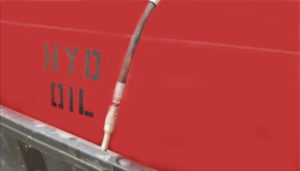Hydraulic Oil: Oil Life
 Hydraulic Oil
Hydraulic Oil
Fundamentals
In part 1 of this series on hydraulic oil we discuss the basics of viscosity and conclude that it is important to select the correct oil viscosity based on the environmental and operational effects on the system. In this section of the hydraulic oil blog post we will discuss a few general conditions that affect the oil life.
The animating element of a hydraulic system is the hydraulic oil. For something so important you would think it would get more attention. We buy it in bulk so we can get the best price but we give little attention to how we store it and transfer it into our equipment. We allow it to overheat and get dirty and yet we expect it to perform everyday and keep our machines running.
Fortunately, hydraulic oil is quite forgiving and even under abuse and neglect, it continues to perform. But if we treat it properly, keep it clean and moderately cool, it will take care of our equipment and take care of our customers.
Oil Life
Hydraulic oil is specifically designed to work in a hydraulic system. Additives are added to the oil to maintain viscosity, prevent foaming and corrosion of steel and brass parts found in most systems. When the additives in the oil are depleted the oil loses its properties and reaches the end of its useful life.
The life span of hydraulic oils most generally varies with the operating temperature of the system. The higher the operating temperature of the hydraulic system the faster the additives in the system break down. Most hydraulic systems are designed to operate between 140°F and 160°F. At this temperature range the hydraulic oil could provide up to 5,000 hours of useful life to the system.
Unfortunately, in most older hydraulic bending machines the inefficiencies of the system design result in operating temperatures that far exceed 160°F. On a hot summer day with ambient temperatures above 95°F I have seen system temperatures exceed 250°F. Under these conditions the viscosity of the oil reaches a point where the bending machine may not be able to reach the pressure required to bend the pipe.
Many smaller pipe bending machines are not designed with oil coolers and the units are typically shut off between bends. The intermittent operation of these smaller machines permitted less efficient designs because the dwell time between pipe bends typically allowed the oil to cool. However, today’s bending crews are more efficient and production is driving profitability. As a result the temperature of the oil rises and little or no dwell time is provided for the oil to circulate and cool.
New design considerations will factor into the smaller pipe bending equipment with the arrival of Tier 4 engines. These engines require continuous operation of the engine. As a result, hydraulic systems will require additional consideration when designing the cooling systems and in the sources of heat generation.
